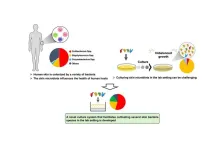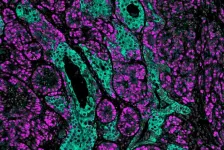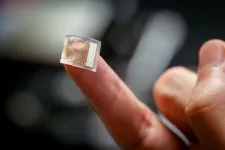“It is often assumed that contaminated drinking water is the main pathway through which we are exposed to PFAS,” says Detlef Knappe, professor of civil, construction, and environmental engineering at NC State and a lead investigator of the study. “An important goal of our study was to determine whether people who live in PFAS-impacted communities are also exposed to PFAS through home-grown produce.”
The researchers collected 53 produce samples from five residential gardens located near the fluorochemical manufacturer Fayetteville Works in Fayetteville, N.C. Samples were analyzed for 43 PFAS. The targeted PFAS included GenX and 12 other per- and polyfluoroalkyl ether acids (PFEAs) that are uniquely associated with the Chemours-owned facility.
The summed PFAS concentrations detected in as-received produce reached up to 38 nanograms per gram (ng/g), with PFEAs from the manufacturer overwhelmingly dominating the PFAS profile.
Among different types of produce studied, which included fruits, vegetables, and nuts, researchers found that water-rich produce, like berries and figs, exhibited the highest PFAS levels. When comparing frozen produce harvested in the area over time, researchers observed a general decreasing trend in PFAS levels from 2013 to 2019, though with some variations. While the exact cause of this decline is unclear, researchers suspect that interventions implemented to reduce air emissions at the nearby fluorochemical manufacturer might have played a role.
Next, the researchers looked at how PFAS exposure through consuming contaminated produce compared to exposure through drinking water. Specifically, researchers determined how much produce would give the same exposure to GenX as drinking water with 10 ng/L of GenX, the highest level allowed by the U.S. Environmental Protection Agency (EPA).
“The comparison was made based solely on GenX because it was the only one of the detected PFEAs for which toxicity information was available,” says Pingping Meng, assistant professor of chemistry at ECU and lead author of this study.
For the site with the highest average GenX concentration in the studied produce (0.19 ng/g), the researchers found that for children, daily exposure to GenX from drinking water containing 10 ng/L GenX is similar to eating about 17 g (0.6 ounces, or about 10 blueberries) and adults eating about 68 g (2.4 ounces) of produce. These produce quantities are about nine times lower for children and four times lower for adults than the typical intake of fruits and vegetables.
To assess the long-term risk of consuming GenX-contaminated produce in impacted communities, researchers also calculated the chronic-exposure daily limit, which is the maximum amount of produce that an individual could safely consume daily.
For children aged 3 to 6 years, the daily limit for chronic exposure was 289 grams daily (about 10 ounces, or one and two-thirds cups of blueberries), which is higher than the typical value of 186 grams per day. However, the researchers note that the risk from consuming this amount of produce is likely underestimated because the calculation didn't consider other PFAS in the produce.
“We may be underestimating the risk because we are not considering the potentially additive effects of PFEA mixtures, particularly for PFEAs that were detected at concentrations higher than GenX but for which health-based reference doses are lacking,” Meng says. “Research is urgently needed to better understand the toxicity of the dominant PFEAs that we detected in the produce.”
“Our results show that people who live near Fayetteville Works and consumed locally grown fruits and vegetables were exposed to numerous PFEAs through their diet,” adds Knappe. “These findings highlight that diet, in addition to drinking water, can be an important human exposure pathway.”
The study, “Residential Garden Produce Harvested Near a Fluorochemical Manufacturer in North Carolina Can be an Important Fluoroether Exposure Pathway” appears in the Journal of Agricultural and Food Chemistry and was supported by the U.S. EPA [Grant R839482: U.S. National Investigation of Transport and Exposure from Drinking Water and Diet (PFAS UNITEDD)] and the North Carolina Collaboratory. NC State co-authors include Nadia Sheppard, Sarangi Joseph and Owen Duckworth. Christopher Higgins of the Colorado School of Mines also contributed to the work.
-30-
Note to editors: An abstract follows.
“Residential garden produce harvested near a fluorochemical manufacturer in North Carolina can be an important fluoroether exposure pathway”
DOI: 10.1021/acs.jafc.4c06177
Authors: Pingping Meng, East Carolina University; Nadia Sheppard, Sarangi Joseph, Owen W. Duckworth, Detlef R. U. Knappe, North Carolina State University; Christopher P. Higgins, Colorado School of Mines
Published: Nov. 20, 2024 in the Journal of Agricultural and Food Chemistry
Abstract:
Dietary intake can be an important exposure route to per- and polyfluoroalkyl substances (PFASs). Little is known about the bioaccumulation of emerging per- and polyfluoroalkyl ether acids (PFEAs) in garden produce from PFAS-impacted communities and the associated dietary exposure risk. In this study, fifty-three produce samples were collected from five residential gardens near a fluorochemical manufacturer. Summed PFAS concentrations ranged from 0.0026 to 38 ng/g wet weight of produce, and water-rich produce exhibited the highest PFAS levels. The PFAS signature was dominated by PFEAs, and hexafluoropropylene oxide-dimer acid (commonly known as GenX) was detected in 72% of samples. Based on average measured GenX concentrations, chronic-exposure daily limits were as low as 289 g produce/day for children (3-6 yr). This analysis does not consider other PFEAs that were present at higher concentrations, but for which reference doses were not available. This study revealed that consuming residential garden produce grown in PFAS-impacted communities can be an important exposure pathway.
END





